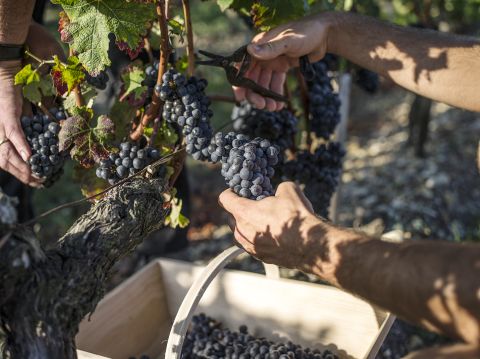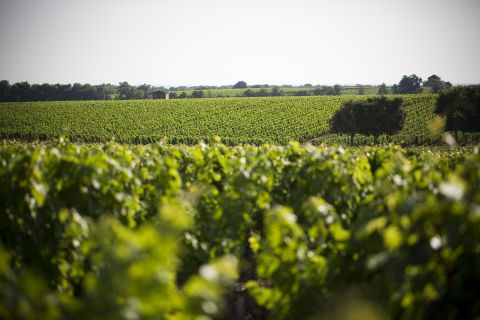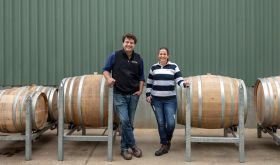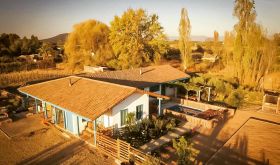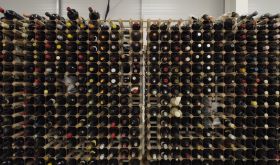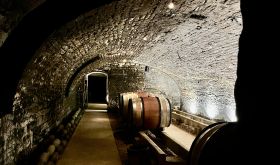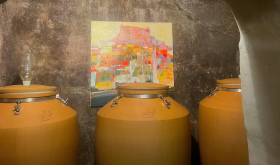Before picking my wine of the week I had a quick look back to see when red bordeaux was last featured in this slot, and it seems it is nearly a year since a red bordeaux was chosen as wine of the week. Bordeaux is much maligned at the moment, partly due to a downtrodden market through uncertain times, partly due to a creaking en primeur system after a series of overpriced releases that will struggle to recover with the imminent but less-than-brilliant 2024s, and of course due to increasing competition from superb wines around the world that make this once go-to region ever less fashionable for wine lovers old and new.
However, I cannot think of a time when there was more great, affordable bordeaux available to drink. Farming has never been better, overhauled from semi-industrial and sometimes careless work that was common just 15 years ago. Winemaking, too, has seen a welcome shift away from force in extraction, liberal use of new oak and maximum ripeness to a search for identity and balance. Yes, the top few names feel unreachable to all but the wealthiest collector, but there is a raft of truly superb wines being made in the region today, and you can pick them up with bottle age at a snip. Château Capbern 2016 is one such wine.
Château Capbern (formerly Capbern Gasqueton) is a St-Estèphe property that has been under the same ownership as Château Calon Ségur since 2012, following the death of Denise Gasqueton in 2011. In the years since, the wine has improved dramatically, with a new team and reinvigorated vineyard-management programme. The cellars were already in good shape at the time of the takeover, renovated with a gravity-fed system in 2011. The vineyards are well situated and typical for the appellation in soil composition, lying in a single block between Phélan Ségur and Meyney. (See the St-Estèphe map from the World Atlas of Wine.) There are a little over 30 ha (74 acres) planted, most of which is now in production, with the split of planting roughly equal parts of Merlot and Cabernet Sauvignon (plus a touch of Petit Verdot).
I had the 2016 recently at a ‘blind wine Friday’ tasting at Farr Vintners, where I work. The team use the lull of a Friday afternoon to open something interesting, different or mature and keep our palates up to speed. This wine was immediately seductive, you could feel the Merlot sheen softening the edges and filling the core of fruit, the Cabernet Sauvignon giving that sapid bite and moreish depth. We were immediately in Bordeaux, but due to the Merlot people veered between left and right banks, and between 2016 and a warm vintage such as 2015 or 2019. That chalky structure proved the key element, the chiselled nature of 2016’s tannins the giveaway. We were, however, considering much more lofty names than Capbern.
And that, really, is the point. Capbern is made by a team that makes another wine from similar terroir that is more than four times the price. The same expertise goes into this wine, but it is still under £20 a bottle in bond for those buying by the case. And that is for 2016, arguably the greatest vintage of the modern era, one that retains its vibrancy and freshness more than the hotter great vintages we have seen in the last five or six years. Not only that, while Calon Ségur 2016 (like most of the big names) is still in its awkward closed phase, you can drink this tonight. I can’t think of many regions where you can buy wines at nearly a decade old, with such pedigree and such quality, that are ready to drink but which could be aged for another decade if desired.
Capbern is a rounded and modern style of bordeaux; you don’t need to cellar it for 15 years (though you can), and it is not an austere, astringent style of St-Estèphe. This has body, depth, spice and plushness without losing its Médocain soul. The alcohol is a little high at 14%, though that’s not uncommon for bordeaux these days. The suppleness that comes with this type of wine is ideal for people who don’t have deep cellars or the patience to wait decades for their wine to reach apex maturity. It is these kinds of bordeaux that I drink at home, and they have never been better.
I expect in the coming weeks and months bordeaux will get quite a bit more bad press, be it continued falling prices or the quality and pricing of the 2024s (though I hope to see prices come down significantly for these new releases). But I can fully recommend looking out for wines like this; there are quite a few around if you go digging through your local independent or your favourite merchant’s website, and they remind you why bordeaux can deliver serious quality that won’t break the bank.
Read more about Bordeaux's 2016 vintage in our extensive coverage, and explore other 2016s from Bordeaux – many recently tasted – in our tasting notes database.


